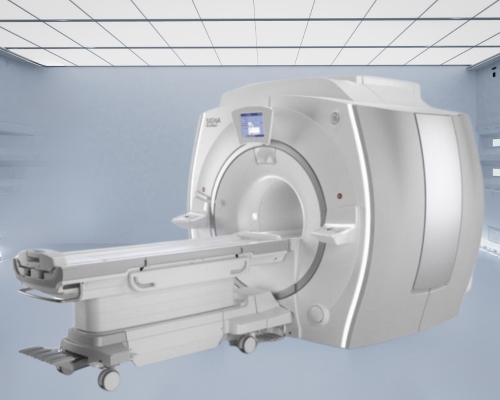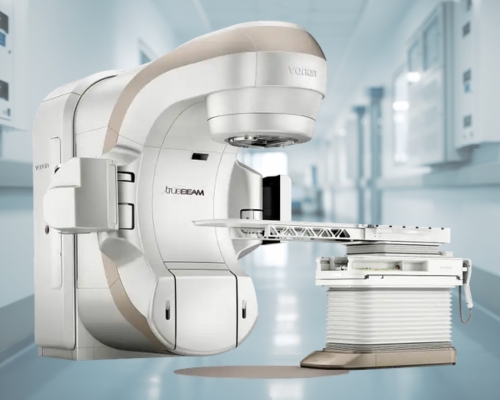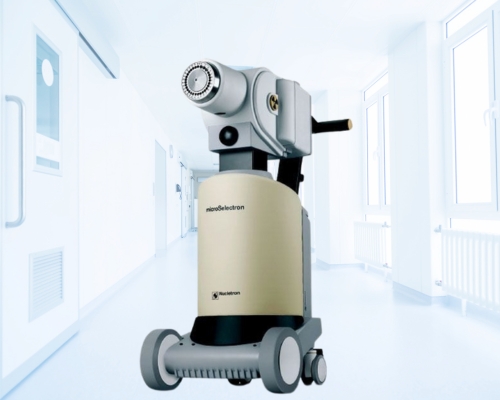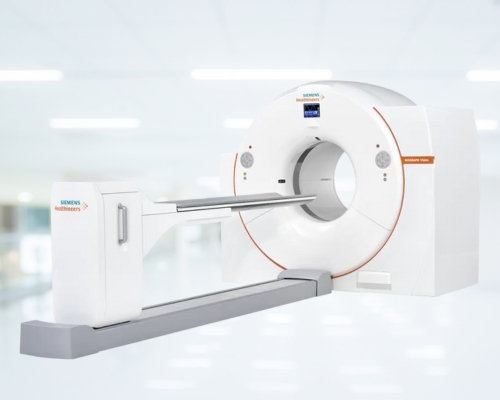GE Architect 3.0T Wide-Bore MRI Scanner

What is the GE Architect 3.0T Wide-Bore MRI Scanner?
The GE Architect 3.0T Wide-Bore MRI Scanner is a high-resolution imaging device designed to perform magnetic resonance imaging (MRI) scans with advanced capabilities. It features a wide-bore design, which provides a larger opening for patient comfort and accessibility and operates at a magnetic field strength of 3.0 Tesla (T), delivering high-quality images with exceptional detail. This MRI scanner is used to diagnose and evaluate a wide range of medical conditions through detailed cross-sectional imaging of the body's internal structures.
How Does It Help?
The GE Architect 3.0T Wide-Bore MRI Scanner helps by providing high-resolution imaging of internal organs, tissues, and structures with improved accuracy and detail. Its advanced imaging capabilities facilitate precise diagnosis and evaluation of various medical conditions, including tumors, brain disorders, joint injuries, and spinal conditions. The wide-bore design enhances patient comfort and reduces anxiety during the scan, making it especially beneficial for patients who may feel claustrophobic in traditional MRI machines.
How Is It Done?
Preparation
Before the MRI scan, patients are asked to remove any metal objects, such as jewelry, belts, and hearing aids, as these can interfere with the MRI’s magnetic field. They may need to change into a hospital gown. The healthcare provider reviews the patient's medical history and any contraindications for MRI, such as implanted devices or metal fragments.
Procedure
During the MRI scan, the patient is positioned on the examination table, which then slides into the wide-bore MRI scanner. The GE Architect 3.0T uses strong magnetic fields and radiofrequency pulses to generate detailed images of the body’s internal structures. The patient is asked to remain as still as possible to ensure clear and accurate images. The scanner produces high-resolution images, which are analyzed by radiologists for diagnosis.
After Treatment
After the scan, the patient can typically resume normal activities immediately. The MRI images are reviewed by a radiologist, who will prepare a report for the referring physician. The results are then discussed with the patient during a follow-up appointment. The MRI scanner is cleaned and prepared for the next patient according to standard protocols.
What Are The Benefits & Risks Of GE Architect 3.0T Wide-Bore MRI Scanner?
Benefits:
- High-Resolution Imaging: Provides detailed and high-quality images, allowing for accurate diagnosis and assessment of various medical conditions.
- Patient Comfort: The wide-bore design offers a more comfortable experience for patients, reducing feelings of claustrophobia and improving the overall scan experience.
Risks:
- Magnetic Field Exposure: Although MRI uses non-ionizing radiation, the strong magnetic field can pose risks for patients with certain metal implants or devices, necessitating careful screening.
- Claustrophobia: Despite the wide-bore design, some patients may still experience discomfort or anxiety during the scan, although this is generally less common than with traditional MRI machines.
What Makes GE Architect 3.0T Wide-Bore MRI Scanner So Unique?
The GE Architect 3.0T Wide-Bore MRI Scanner is unique for its combination of high magnetic field strength (3.0 Tesla) and wide-bore design, which together offer superior imaging quality and enhanced patient comfort. Its advanced imaging technology provides exceptional detail and resolution, making it a valuable tool for diagnosing complex medical conditions. The wide-bore feature addresses patient comfort and accessibility issues, distinguishing it from standard MRI scanners and making it a preferred choice for a broad range of clinical applications.
Looking for an Expert
Sharda Care - Healthcity is home to some of the eminent Doctors in the world.
Book an Appointment








